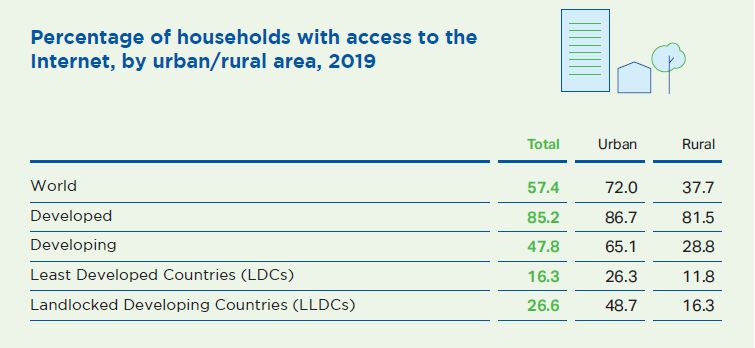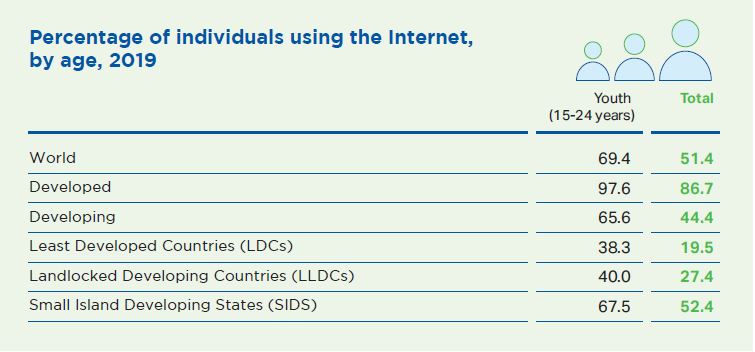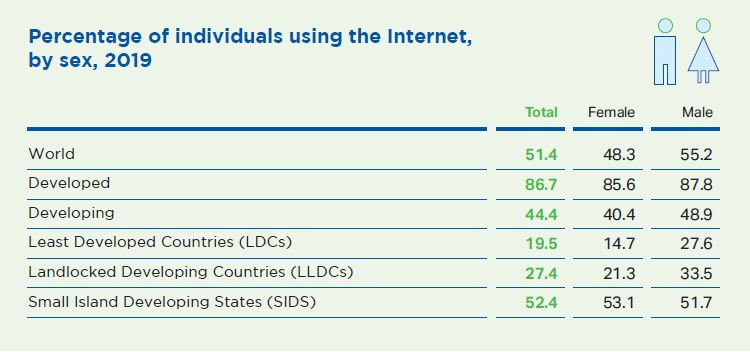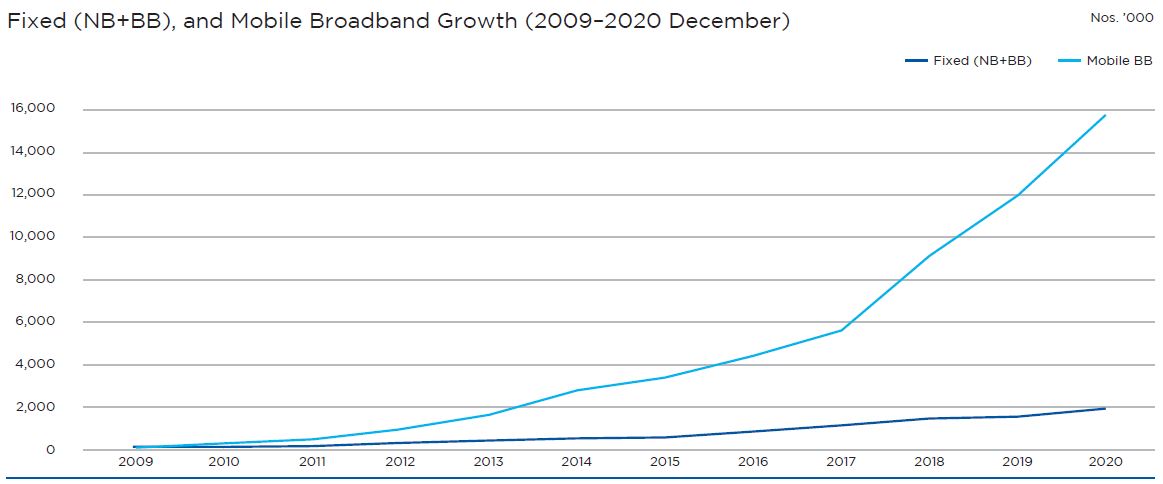
Accelerating digital transformation
Operating environment
Operating environment
Lifestyles, economies, and trade are being transformed through innovative technologies of the Fourth Industrial Revolution such as digital economies, industry automations, Artificial Intelligence (AI), Machine Learning (ML) and consumer smart adoptions. Economies are increasingly digitising and industries are becoming more automated globally. Hyperautomation; an IT mega-trend, is the idea that anything within an organisation that can be automated – such as legacy business processes – should be automated. The pandemic has accelerated adoption of the concept, which is also known as “digital process automation” and “intelligent process automation”, while, AI and ML have gained momentum in 2020. AI and ML technologies were increasingly used, from advanced quantum computing systems and leading-edge medical diagnostic systems to consumer electronics and “smart” personal assistants, as well as cybersecurity systems for both corporate systems and home security. The use of disruptive technologies across the globe was fuelled by the emergence of the pandemic as consumers, governments and businesses adjusted to the new normal. A range of industrial IoT solutions, robots, and AI sensors are being adopted by manufacturing companies to automate and monitor production. Many of these depend on low-latency connectivity for precision thresholds and real-time analytics, which will likely require edge-computing infrastructure. Globally, smart manufacturing IoT connections is expected to grow fourfold between 2019 and 2025 to over 1.3 billion connections.
The impact of the COVID-19 pandemic has been two-sided for telecoms operators. On the upside, is the positive mindshare gained with customers, by providing critical connectivity to households and businesses throughout the crisis. These telecoms have withstood the sharp increase in demand driven by home working, schooling and entertainment and proactively provided customer relief packages, and worked closely with governments and regulators, to support vulnerable customers and healthcare providers where needed. As identified by the EY Top 10 Risks for Telecommunications 2020 Report, the number one risk for telecommunications is the failure to ensure infrastructure resilience and reach. This is followed by risks such as the inability to scale internal digitisation initiatives, failure to redesign workforce purpose and inclusion and failure to improve capex efficiency and network returns.
The International Telecommunication Union (ITU) estimates that there were over four billion Internet users at the end of 2019, of which over three billion users are in developing countries. However, globally, three billion citizens remain unconnected. Globally, about 72% of households in urban areas had access to the Internet at home in 2019, almost twice as much as in rural areas (nearly 38%). The urban-rural gap was small in developed countries, but in developing countries urban access to the Internet was 2.3 times higher than rural access.
Source: The International Telecommunication Union
At the end of 2019, just over half of the world population was using the Internet, but this proportion increases to over 69% among youth (aged 15-24 years). This also means that 369 million young people and 3.7 billion people in total were not connected to Internet.
In developed countries, virtually all young persons were using the Internet. In Least Developed Countries (LDCs), the overall share of people using the Internet is half of the corresponding share for young people, which itself is only 38% of all youth. Asia and the Pacific is the region with the highest youth/overall ratio, implying the potential for older age groups to catch up with younger ones in this region in their Internet use. In 2019, it is estimated that globally 55% of the male population was using the Internet, compared with 48% of the female population.
Source: The International Telecommunication Union
Source: The International Telecommunication Union
The 4G network coverage increased
twofold globally, between 2015 and 2020. With the gradual slowdown in the annual growth since 2017, the 2020 coverage was only 1.3% higher than 2019. Out of the world population, 93% had access to a mobile-broadband network, which was less than half a percentage point higher than a year ago. Almost 85% of the population is expected to be covered by a 4G network by end 2020.
Over 90% of the population has access to a mobile-broadband network (3G or above), in most regions. About a quarter of the population in LDCs and LLDCs, and about 15% of the Small Island Developing States (SIDSs) population do not have access to a mobile-broadband network. This falls short of the UN Sustainable Development Goals Target 9.c, to significantly increase access to information and communications technology and strive to provide universal and affordable access to the Internet in least developed countries
by 2020.
In eight economies out of the 73 for which data are available, less than half the population owns a mobile phone, whilst in 44 economies, more than four-fifths of the population owns a mobile phone. In particular, in several Arab countries, virtually everyone possesses one.
The number of active mobile-broadband subscriptions in 2020 stood at 75 per 100 inhabitants, which was only 1.1% higher than in 2019. There was a slowdown in fixed-broadband subscriptions as well to 2.7% in 2020. The largest gaps between the regions was for fixed-broadband subscriptions. The total number of mobile-cellular telephone subscriptions declined for the first time in history in 2020.
There were an estimated 105 mobile-cellular subscriptions per 100 inhabitants in mid-2020, down from 108 in 2019. The decline was driven by developing countries, where the number of subscriptions reduced from 103 in 2019 to 99 for the same period. In developed countries, the trend was still upwards.
International bandwidth usage growth accelerated in 2020, as networks around the world were tested during the COVID-19 pandemic. The increased Internet traffic first caused a temporary drop in speed in many countries, but international bandwidth usage is estimated to have grown by 38% globally, exceeding the growth rate of the previous year by 6 percentage points. Asia and the Pacific had the highest international bandwidth use (over 300 Terabit per second), followed by Europe (over 150 Tbit/s) and the Americas (over 140 Tbit/s). Growth of international bandwidth usage in developing countries surpassed growth in developed countries whilst the highest growth among special regions was observed in the Landlocked Developing Countries (LLDCs).
A research on Internet performance following the COVID-19 pandemic in Afghanistan, Nepal, and Sri Lanka, cites that users have become dissatisfied during the pandemic with the speed, reliability, and steadiness of their Internet connection, and also with the service provider’s customer service and the expected performance of the Internet in relation to the price paid. In Sri Lanka, the number of respondents spending over USD15 per month has more than doubled (from 16% to 37%) as customer spending on internet has increased during the pandemic.
According to data from the Telecommunications Regulatory Commission as at end December 2020, in 2009 fixed broadband and narrow band subscriptions totalled to 0.25 million. By end December 2019 fixed broadband subscriptions increased to 1.65 million and continued to grow to 1.96 million by end December 2020. Mobile broadband subscriptions were 0.09 million in 2009 and grew to 11.75 million by end 2019 and continued to increase by over 3.8 million 12 months later, to 15.57 million by end December 2020, demonstrating the broadband growth momentum.
Source: Telecommunications Regulatory Commission
Sri Lanka experienced capital outflows, exchange rate depreciation, and increased pressure on government finances, which led to the economy shrinking by 16.3% in Q2, its largest drop in history. Although there was a stronger than anticipated recovery of 1.5% growth in Q3, following the unprecedented fiscal stimulus and monetary easing initiatives by the Government and the Central Bank of Sri Lanka (CBSL), respectively, together with larger than expected remittances from migrant workers and lower global oil prices, and all sectors experiencing a rebound. However, a resurgent wave of COVID-19 infections dampened momentum in Q4. The Department of Census and Statistics projects economic growth in Q4 to be 1.3%, and overall, to have contracted by 3.6% in 2020. The CBSL anticipates a strong growth of 6% in 2021.
The already stressed external sector exerted pressure on the rupee in the aftermath of the pandemic in March. Even though import restrictions softened the steep depreciation of the currency, the rupee came under severe pressure in March/April, which rebounded and depreciated again with the credit downgrades. As per the Central Bank, the rupee depreciated by 2.6% YoY.
As people increasingly adjust to digitalised ways of working and living, it is imperative that government and Internet service providers accelerate efforts to increase network capacity and reliability, and address urgent access gaps. Short-term actions such as subsiding Internet charges, waiving late fees, maintaining services for those behind on bills and increasing data allowances can ease users’ ability to connect.
Convergence is the main trend for future network development globally, where consumers and businesses benefit from an integrated and unified service-provisioning platform providing integrated audio, video, and data services over multiple access networks. Meanwhile IoT adoption is being driven by emerging applications and business models, coupled with falling device costs, and, consequently, the number of connected devices – connected cars, machines, meters, wearables, and consumer electronics. According to Ericsson, the 400 million IoT devices with cellular connections in 2016 are projected to reach 1.5 billion in 2022. This robust growth is expected to be driven by increased industry focus on deploying a connected ecosystem and the standardisation of 3GPP cellular IoT technologies. While existing 4G and 3G, Wi-Fi, and wireless mesh networks are already being utilised in these smart devices globally, the advent of 5G will significantly enhance the use of modern technologies and countries are have already commenced experimenting with 5G networks. It is expected that 5G technologies would contribute USD 2.2 Tn. to the global economy between 2024 and 2034. Crucial sectors such as manufacturing/utilities (particularly in China) and professional/financial services (especially in MENA and North America) is expected to benefit the most from the new technology.




